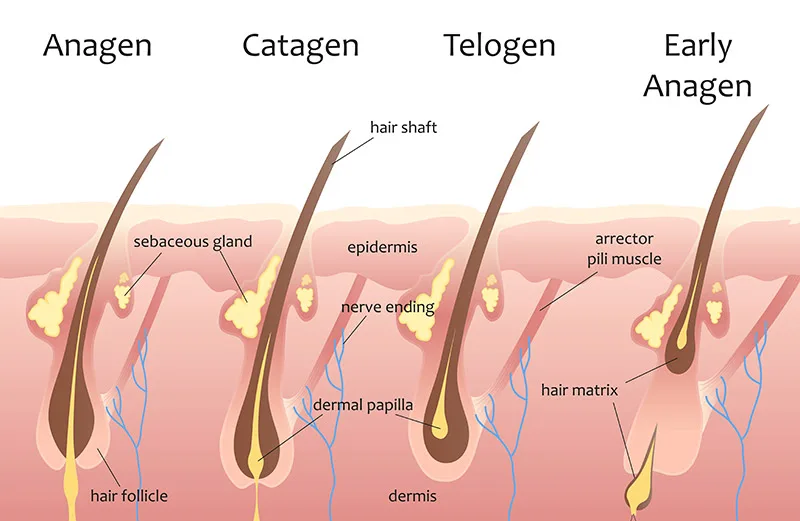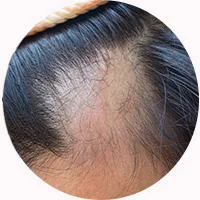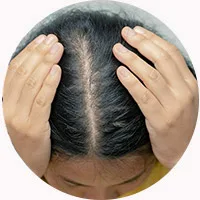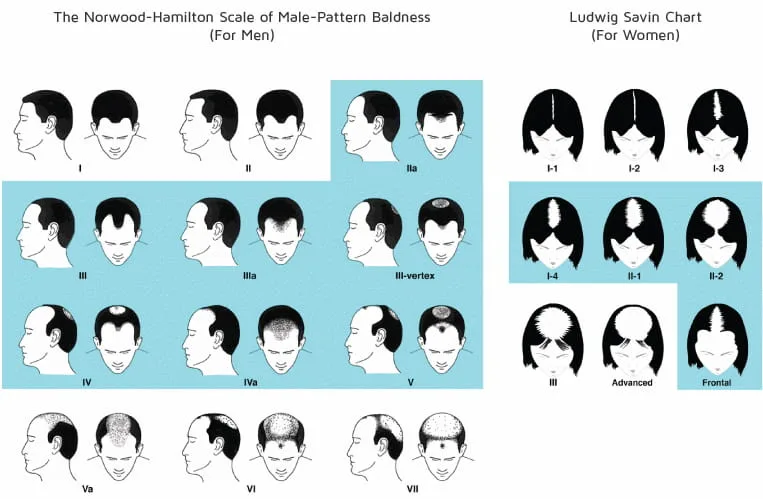
Hair Loss Treatment
Hair loss treatments focus on addressing the root causes of hair thinning and balding, offering solutions to stimulate natural hair growth and enhance overall scalp health.
Hair Growth Cycle
Hair loss often results from factors like genetics, stress, hormonal changes, or nutritional deficiencies, leading to thinning or balding over time. Improving scalp health and maintaining a balanced diet rich in vitamins and minerals can support natural hair growth. Regular scalp massages may also help stimulate blood circulation, promoting healthier hair follicles.
By understanding the root causes and practicing proper hair care routines, you can enhance hair strength and vitality, potentially slowing down the progression of hair loss.
There are 3 stages of hair growth:
- Anagen: Growth phase that lasts for 2 – 6 years, comprises about 80 – 85% of our hairs.
- Catagen: Transitional phase that lasts for 2 – 3 weeks when the hair follicles prepare themselves for ‘hibernation’.
- Telogen: Resting phase that lasts for 1 – 4 months, comprises about 15 – 20% of our hairs.

After Telogen ends, Anagen will kick in again and the new growing hair will push the existing hair out from the follicle, which causes the natural hair fall.
Hair loss becomes a problem when Anagen phase is shortened while Telogen phase is lengthened. Shorter hair growth phase means that hairs are unable to grow as long as before. With prolonged Telogen phase, hair follicles will shrink with thinner hair.

Male Pattern Hair Loss
It affects around half of all men over 50 years old. Male pattern hair loss, known as androgenetic alopecia (AGA), is the most common type of hair loss. It happens because of the combination of androgens (male hormone) and genetic predisposition. It is usually associated with receding hairline and hair loss at the top of the head.

Female Pattern Hair Loss
It is also known as androgenetic alopecia (AGA), affected by androgen and genetic predisposition. Early signs of female pattern hair loss include thinning of hair or widening of part line. Unlike male pattern hair loss, it is less severe, and hairline usually does not recede. It is more common with advanced age.
Androgen And Dihydrotestosterone (Dht)
Androgen is a hormone responsible for the development of male sex organs and male characteristics such as deeper voice, more body hairs and higher muscle mass.
Testosterone is the major androgen, when converted to dihydrotestosterone (DHT), becomes two times as potent as testosterone. DHT is essential for most hair growth in the body, but it is unfavorable to hair growth on the head. DHT is believed to cause hair follicles to miniaturize, which contributes to hair loss. So, people with a higher level of DHT often experience hair loss.
Females, on the other hand, also produce androgen (testosterone and DHT), but in much lesser amounts than males.
Factors of hair loss:
- Age
- Family history
- Hormonal changes
- Stress
- Unhealthy diet
- Hairstyles and treatments
- Medical condition e.g. thyroid disease, autoimmune disease, scalp infection
- Side effect of medications

Severity Of Hair Loss

Norwood and Ludwig scales are the most commonly used methods when discussing about male and female pattern hair loss respectively. There are 7 Norwood stages and 3 Ludwig scale, defining the severity of hair loss.
Treatment For Hair Loss
You can combine both the thread and filler to harness the benefits while mitigating the downsides. Compared to surgery, these are less invasive with a shorter downtime and natural look.

Calecim® Professional Hair System
Calecium Professional Hair System is developed using a proprietary technology derived from the Mesenchymal Stem cells of the Umbilical Cord , the richest source of stem cells in the body.

Regenera Activa Hairloss Treatment
Approved by major health regulatory authorities internationally, it is a effective procedure to treat androgenetic alopecia, the most common type of hair loss across both genders.